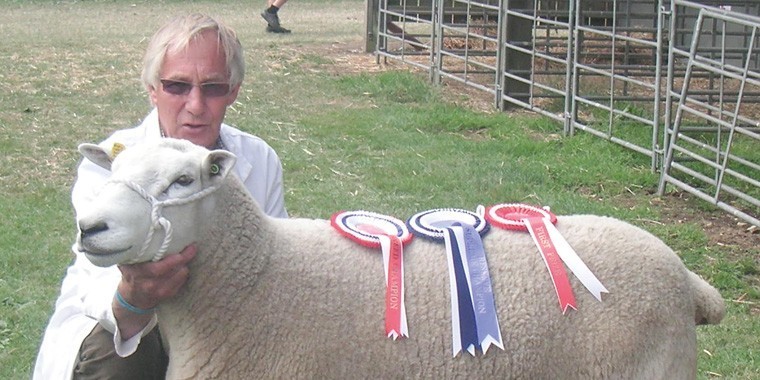At the time of writing our lambing is almost done, at least the Lleyn; the Herdwick are due to take over the lambing paddock this week ready to start around four days after the Lleyn are due to finish. Keeping fairly detailed records of when ewes were tupped is very useful and has shown, this year, that regardless of litter size there seems to be very little variation on the duration of pregnancy. Everything that has lambed so far has been within a day or two of 145 days, with most lambing on their due date; although, I suspect, just a bit of luck this year.
Once again the Herdy tup completely ignored his little group of ewes for three weeks after joining and then covered everything over three days, with no returns; although this was just a bit slower last year, taking five days to cover everything. So, if the Herdys are true to form we should be finished lambing by the end of the month, in theory, but they are sheep and things could, quite easily, still go awry.
Lambing has been relatively easy (so far). I say relatively; they are, after all, sheep and it has not been entirely without incident, sufficient (to date) to make things interesting but not enough to make life difficult. We had some anomalies in the first few ewes lambing, with lamb weights all over the place; similar aged, twin (scanned) ewes, managed the same throughout pregnancy, producing litters ranging from a pair at 7kg and 5 kg to another at 3kg and 4kg on the same day. Fortunately things soon settled down, with most lambs weighing in at 4.5kg to 5.5kg, just about where they need to be.
We have also had rather more ewes needing minor assistance than normal; nothing major – hung elbows, leg back etc – but just a few more than expected. But sheep will be sheep, never without their issues; regardless of what some claim, there is no such thing as an easy-care sheep, some just happen to have a few fewer problems than others and even then they will throw a real curved ball occasionally, simply because they can.
During quite a relaxed lambing it has been interesting simply watching ewe and lamb interactions and behaviour. I have ewes that display the full gambit of mothering styles, from the real tiger mums, insisting that their lambs are never more than a few metres away, to those that, if they were human, could be a cause for social services intervention; off grazing without a clue where their lambs are, although to be fair they do generally, when they realise that their lambs are not there, panic a bit and call them in fairly quickly and vociferously; more careless and forgetful mums than negligent.
Lambs are just as interesting. A lot of early behaviour is plainly instinctive, driven by the desire for food and security, with mum being the source of both. It is, though, surprising how quickly they start to develop learnt behaviour; the recognition of other ewes and lambs (apart from siblings), copying mum, within days, with early attempts at grazing etc. They also begin to recognise differences, to the point where they will even differentiate between different coloured lambs. We have a couple of crossbred ewes in the flock (because I am not allowed to get rid of them) plus a few Lleyn that go to a Suffolk ram. Their progeny quickly recognise that they are different and tend to associate rather more with other, similar lambs.
I have the added joy this year of guiding our pup through her first lambing. She is a lovely little dog both in looks and nature, quite well bred from good, working stock, with all of the instincts, energy and enthusiasm that come with her background. At almost six months old she is coming into the dog equivalent of her teenage years and is beginning to learn to live with her instincts, learning to channel them, with all her youthful enthusiasm, into developing some useful working skills that she is learning to deploy on command.
For a young dog she is doing well, although not without her ups and downs, and we do occasionally have need of some fairly straightforward conversations. As a doggy teenager she occasionally seems to think that she knows best, which can lead her into trouble, but she does, fortunately, tend to learn from her mistakes.
Lamb watching has become one of her favoured pastimes; as she is learning, it is not without its hazards. She was already learning how to balance sheep, that crucial tipping point that triggers the flight or fight response, but has now had to learn that, for ewes with newborn lambs at foot, that response becomes rather more fight than flight. Having been bowled over a few times and taken a few, albeit minor, batterings, she quickly came to appreciate that you simply don’t mess with a snorting, stamping ewe defending her lambs and now thinks that she has worked out the safe distance to avoid any further mishaps. We shall see, but I suspect not. She is discovering, like many novice sheep keepers, that sheep are rather more complex animals than they first appear.




